How many times do you wear a piece of clothing before discarding it? According to a study by the British charity Barnado’s, the average piece of clothing is worn just seven times before it's thrown away. Fast fashion and the Instagram culture have fueled the desire to constantly change our looks, leading to an overflow of unloved garments in landfills worldwide.
The environmental impact of the fashion industry is staggering, with approximately 10% of global carbon emissions and 20% of wastewater attributed to it. The use of synthetic textiles, such as polyester, which break down into microplastics, further exacerbates the problem. These microplastics enter the soil, water, and the food chain, posing a threat to marine life and the environment. In contrast, traditional Thai textiles made from natural yarn, such as silk and cotton, are biodegradable and do not contribute to the microplastic pollution.
Fortunately, there is hope on the horizon as more fashion-conscious individuals in Thailand are turning to homegrown designers who create garments using traditional Thai textiles. These fabrics are not only environmentally friendly, but they also support local communities and empower women. Handlooms, a staple of Thai textile production, are often organized around women-led initiatives in local villages. The income generated by these enterprises goes directly towards improving education and healthcare within the communities.
The making of artisanal Thai fabrics is closely associated with nature. Villagers grow mulberry trees to feed silkworms, and the leftover waste becomes high-quality fertilizer. Natural dyes, derived from sources like indigo and ebony seeds, are non-toxic and do not cause harmful pollution. These traditional techniques prove to be better for both the planet and the people involved.
The preservation of Thailand's traditional textile industry can be credited to the dynamic vision of Her Majesty Queen Sirikit the Queen Mother. During her visits to distant villages, she received gifts of hand-woven fabric from local women. Impressed by their intricate designs, she recognized the danger of this art form fading away. To save this cultural heritage and provide alternative sources of income for rural communities, she launched the SUPPORT Foundation. This foundation gave these weavers an outlet to sell their products and played a crucial role in making handloom fabrics commercially viable.
The trendsetting influence of the royal family continues with Her Royal Highness Princess Sirivannavari Nariratana. As the Editor in Chief of the Thai Textiles Trend Book, she is spearheading efforts to promote traditional Thai textiles globally. The trend book serves as a ready reference for weavers, designers, and anyone interested in Thai textiles. It aims to bring traditional craftsmanship and local wisdom together with sustainability, using natural pigments, fibers, and low carbon production techniques.
Thailand's sustainable fashion industry not only aligns with the Bio-Circular-Green Economy Model promoted by the Thai government but also contributes to achieving the United Nations Sustainable Development Goals (SDGs). From reducing poverty to promoting gender equality and responsible consumption and production, these handloom enterprises have become success stories in sustainable development.
The story of Thailand's sustainable fashion industry teaches us that we can find answers for the future by looking back into our past. The preservation of traditional knowledge and local wisdom by the Royal Family has allowed the Thai people to live in harmony with the natural environment for centuries. Sustainability is deeply ingrained in the Thai way of life.
Dr. Vilawan Mangklatanakul, the Deputy Permanent Secretary for Foreign Affairs of Thailand, is a firm advocate for women's empowerment and community resilience in the face of future challenges. As a career diplomat and an expert in international law, she understands the importance of preserving cultural heritage and sustainable practices.
In conclusion, the future of sustainable fashion lies in the fusion of traditional artistry, community empowerment, and environmental consciousness. By choosing garments made from traditional Thai textiles, we not only contribute to reducing waste and carbon emissions but also support local communities and preserve a rich cultural heritage. Let us embrace sustainable fashion as a way to create a better future for ourselves and the planet.
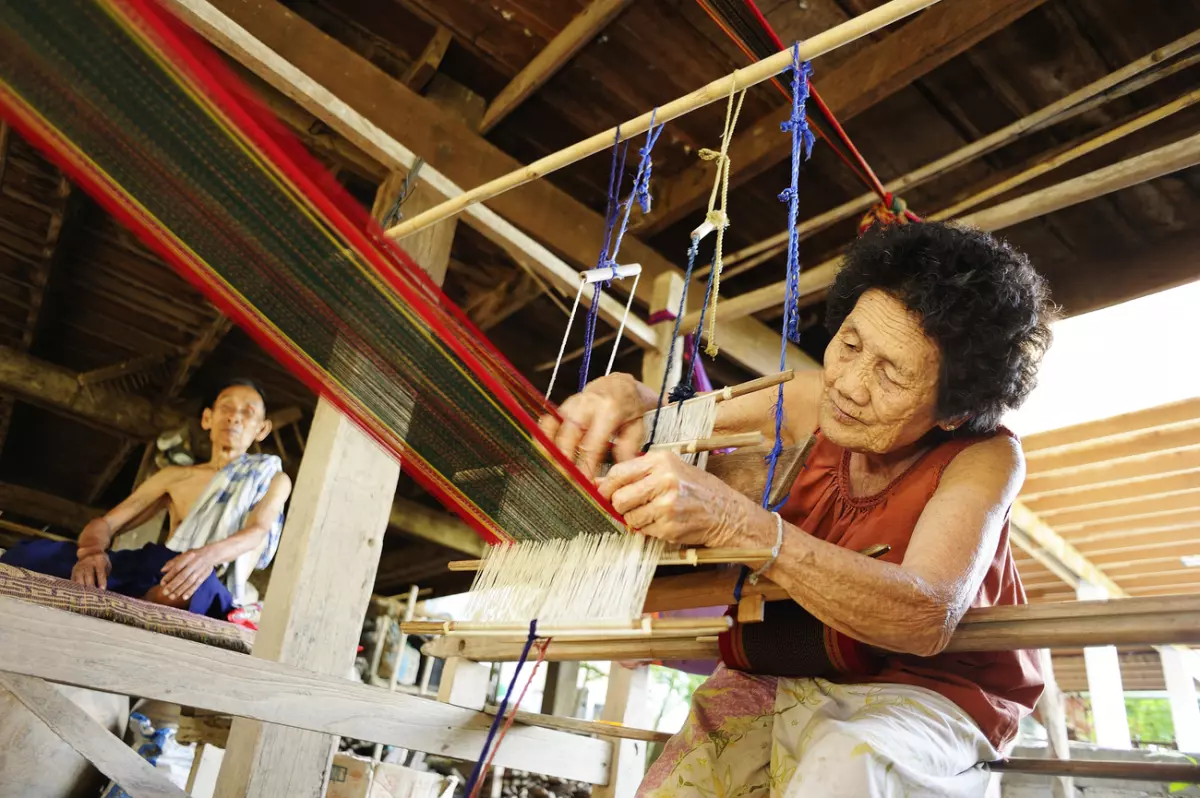 Caption: Ban Hat Siew in Sukhothai province, Northern Thailand: a Tai Phuan woman meticulously patterning a “Pha Sinh Teen Chok,” a kind of sarong for ceremonial use. (Credit: takemetour website)
Caption: Ban Hat Siew in Sukhothai province, Northern Thailand: a Tai Phuan woman meticulously patterning a “Pha Sinh Teen Chok,” a kind of sarong for ceremonial use. (Credit: takemetour website)
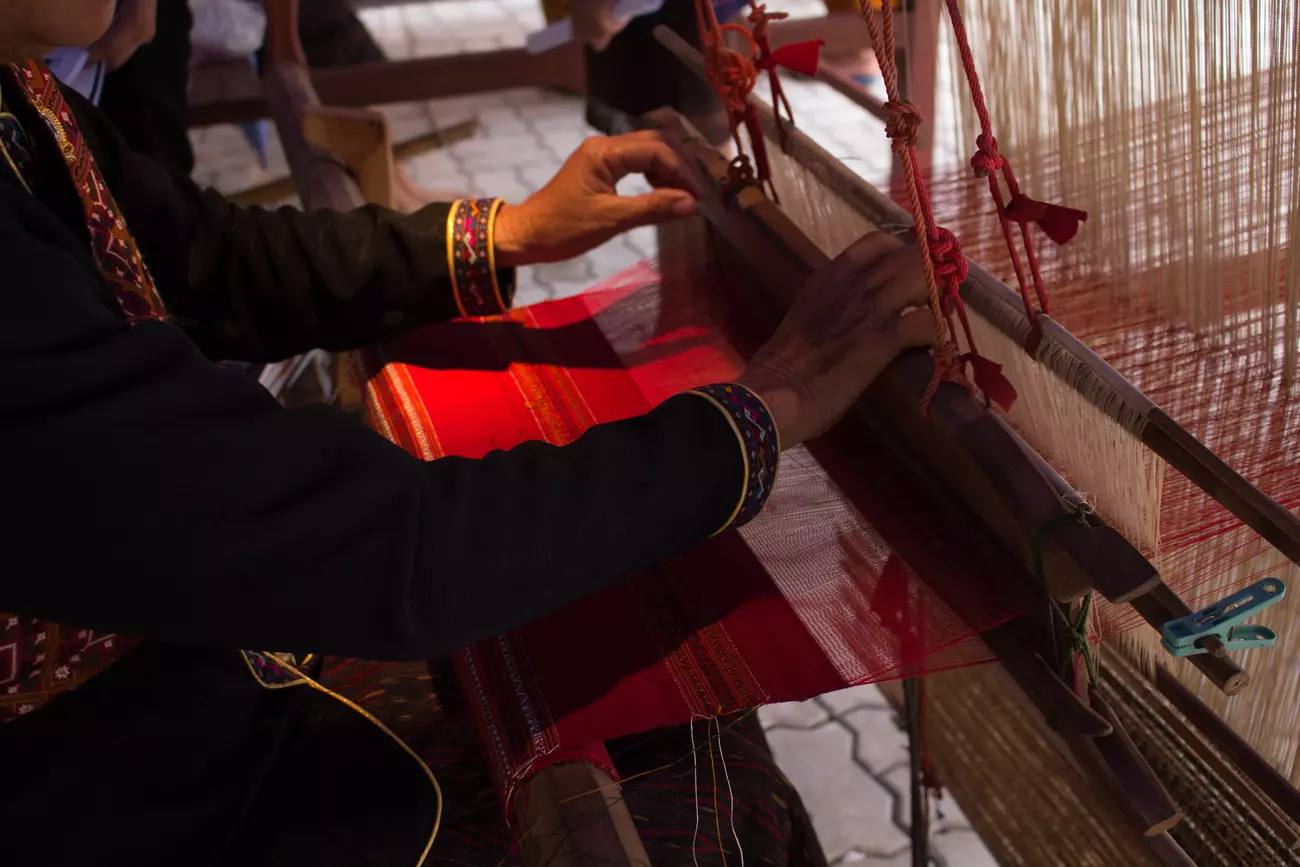 Caption: Ban Phon in Kalasin province, Northeastern Thailand: a Phu Tai woman weaving Phrae Wa silk in Kalasin. (Credit: takemetour website)
Caption: Ban Phon in Kalasin province, Northeastern Thailand: a Phu Tai woman weaving Phrae Wa silk in Kalasin. (Credit: takemetour website)
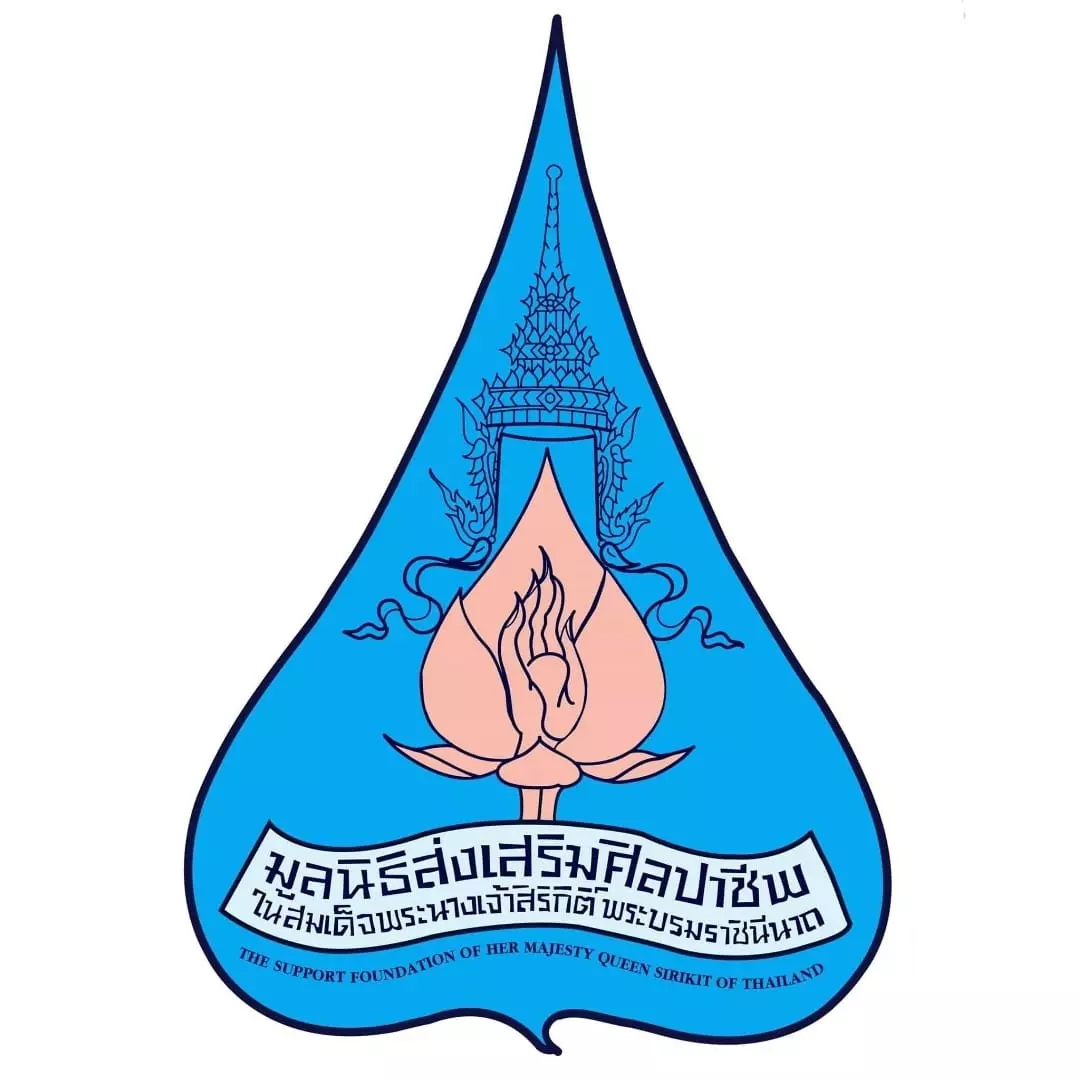 Caption: The SUPPORT Foundation of Her Majesty Queen Sirikit of Thailand (Credit: Facebook page of the SUPPORT Foundation)
Caption: The SUPPORT Foundation of Her Majesty Queen Sirikit of Thailand (Credit: Facebook page of the SUPPORT Foundation)
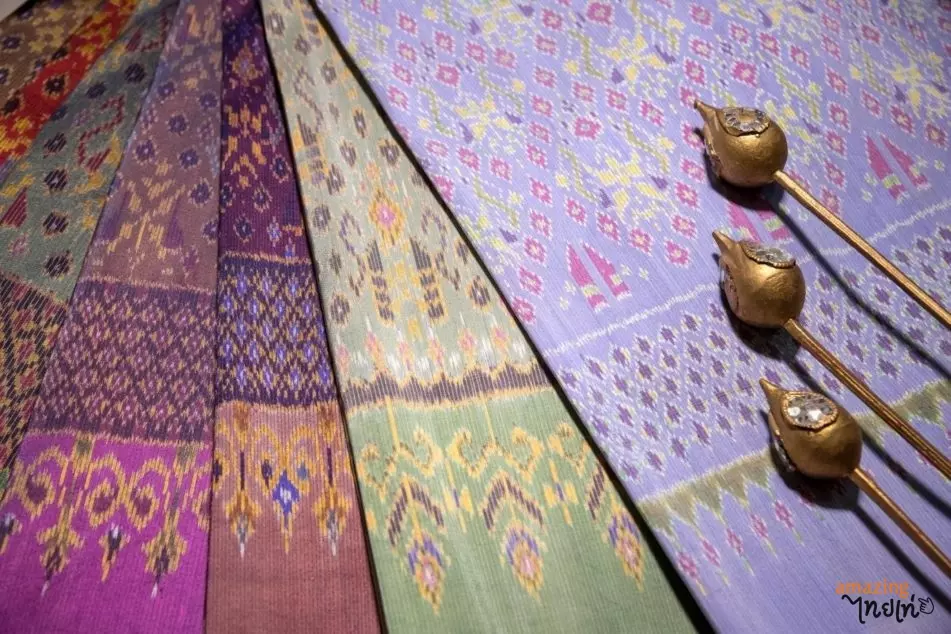
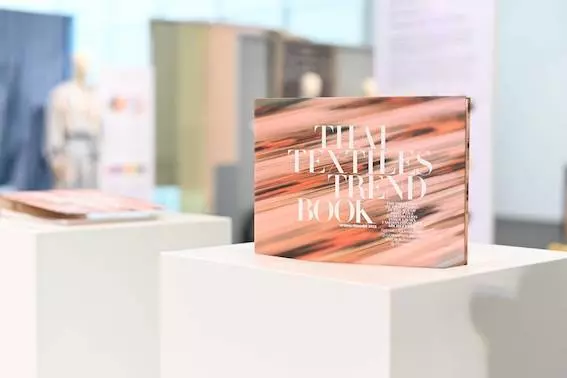 Caption: Examples of local mudmee from Baan Hua Fai Village. (Credit: Tourism in Isan Website)
Caption: Examples of local mudmee from Baan Hua Fai Village. (Credit: Tourism in Isan Website)
 Caption: Book launch event: “Thai Textiles Trend Book SS 2022”. (Credit: Hommes Thailand website)
Caption: Book launch event: “Thai Textiles Trend Book SS 2022”. (Credit: Hommes Thailand website)
About Dr. Vilawan Mangklatanakul:
 Dr. Vilawan Mangklatanakul is the Deputy Permanent Secretary for Foreign Affairs of Thailand and a career diplomat with expertise in Thailand's foreign policy and international law. She has served in various high-ranking positions within the Thai government and has advocated for women's empowerment and community resilience. Dr. Vilawan's commitment to sustainable practices aligns with Thailand's efforts to achieve a better future for all.
Dr. Vilawan Mangklatanakul is the Deputy Permanent Secretary for Foreign Affairs of Thailand and a career diplomat with expertise in Thailand's foreign policy and international law. She has served in various high-ranking positions within the Thai government and has advocated for women's empowerment and community resilience. Dr. Vilawan's commitment to sustainable practices aligns with Thailand's efforts to achieve a better future for all.


















